The good and bad of the Star Wars: Battlefront 2 beta
Loot boxes, a new squad system, different weapon handling, and everything else we liked and didn't.
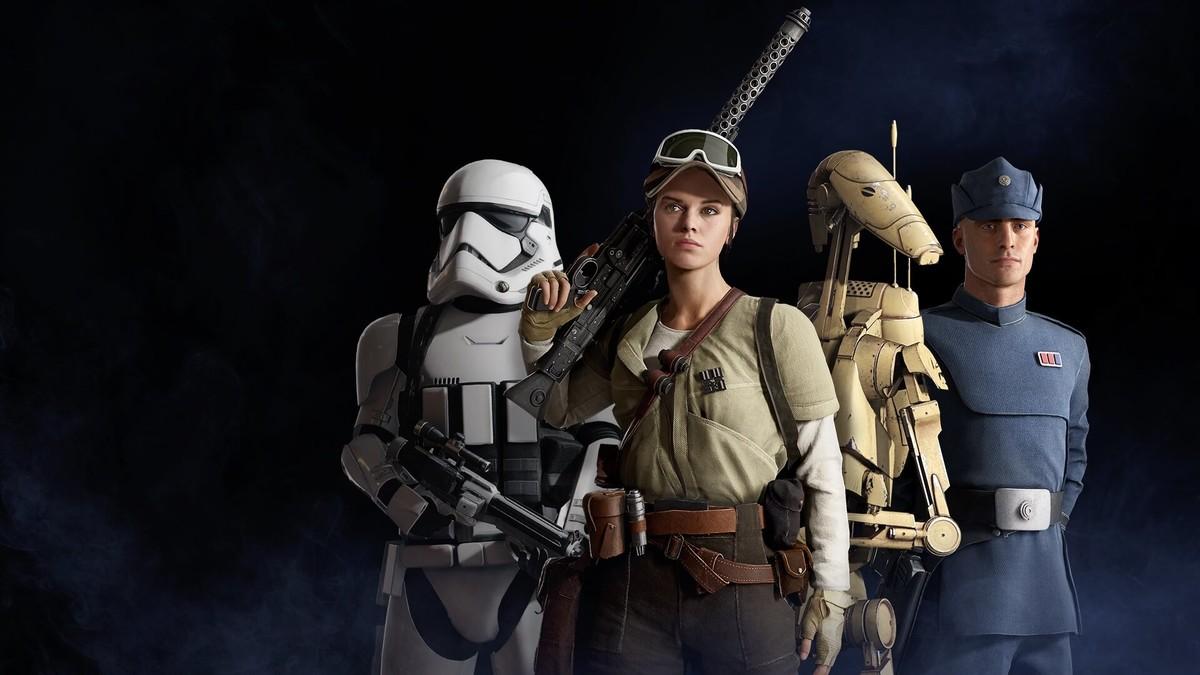
I measure the success of Star Wars Battlefront 2’s beta by how often it pulled me into relaunching after taking a break. I counted: I started the beta nearly 16 times over the weekend, so I’d say I’m somewhere between mostly mesmerized and adequately addicted. Even though I had a paltry three maps to play on.
I particularly liked the added attention to accentuating the gunplay with some much-needed depth. It still lacks the characteristic nuance of DICE’s Battlefield series, but trading concentrated light with enemies isn’t the dull hipfire-fest from 2015’s Battlefront. Each gun type brings heft and different spread patterns, and I had far more opportunity to tighten my shots with steady bursts and target leading rather than weighing down left-click with an unmoving finger.
The distinction between being outgunned by skill instead of losing by virtue of who was spotted first is more clearly established, helped in part by the differing health pools of each class and the rekindled importance of nailing headshots to burst down a target. I think these changes will stand as some of the best improvements.
SWBF2 is obviously channeling the casual approachability of its predecessor, but I wouldn’t toss its experience alongside the perceptions of shallowness that plagued the first game through its lifespan. To that end, here’s what I liked and disliked from the beta, including a few lingering balance concerns that should hopefully be remedied by November.
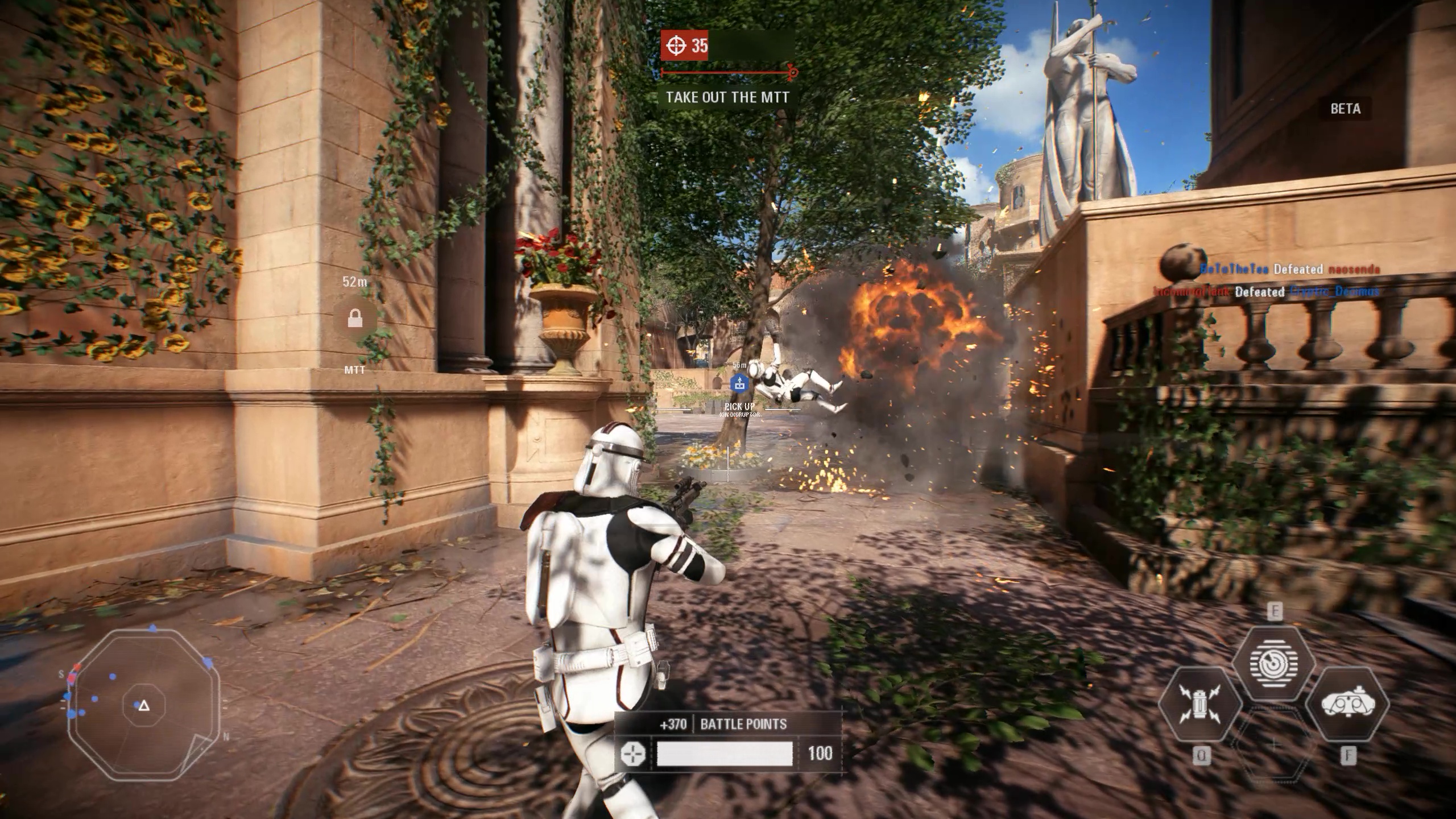
Great: it’s more Star Wars than ever
I’m convinced DICE could double as a special-effects studio for a Star Wars spinoff in place of Industrial Light and Magic. Their talent for art was best seen on Theed, the sumptuously detailed capital city of Naboo and the sample map for the 20v20 Galactic Assault mode. Its sun-drenched main boulevard and smaller pedestrian walkways to the side felt spacious, though players tended to cluster in predictable spots around the ion launchers needed to weaken the droid army’s lumbering troop transport. I also missed the sense of scale of the first Battlefront beta’s Hoth map, but I chalked that up to its higher vehicle presence versus Theed’s mostly infantry-focused combat.
The city’s opulence and architectural quality is breathtaking—background touches like the immensity of the C-997 ships descending to the planet’s surface are great—but I didn’t much care for the density of particle effects constantly clogging my sightlines. I get the aesthetic appeal of swirling clouds of leaves and fluttering flocks of startled birds, but most of those embellishments felt like I was being pitched into buying a license for the Frostbite engine instead of a natural complement to the scenery.
Critically, DICE has expanded on its talent for encouraging the excitement of plunging deep into an epic Star Wars battle. I loved how each Galactic Assault round started with both teams facing each other at either end of Theed’s central street. Frightened civilians and nobles bolted out of the way as droid and clone players alike fired streams of blaster bolts in a huge opening salvo. It’s a fun spectacle for getting into the groove of a round, and DICE’s exquisite audio mixing is a great facilitator for establishing the grandiosity of it all. The Separatist battle droids were adorable and brimmed with personality, yelping with childlike buffoonery (favorite line: “Goodbye, grenade!”) while cutting down clone troopers. That entertainment value helped cut into the bland 'confident soldier' dialogue of the clone, First Order, and Resistance soldiers.
The biggest gaming news, reviews and hardware deals
Keep up to date with the most important stories and the best deals, as picked by the PC Gamer team.
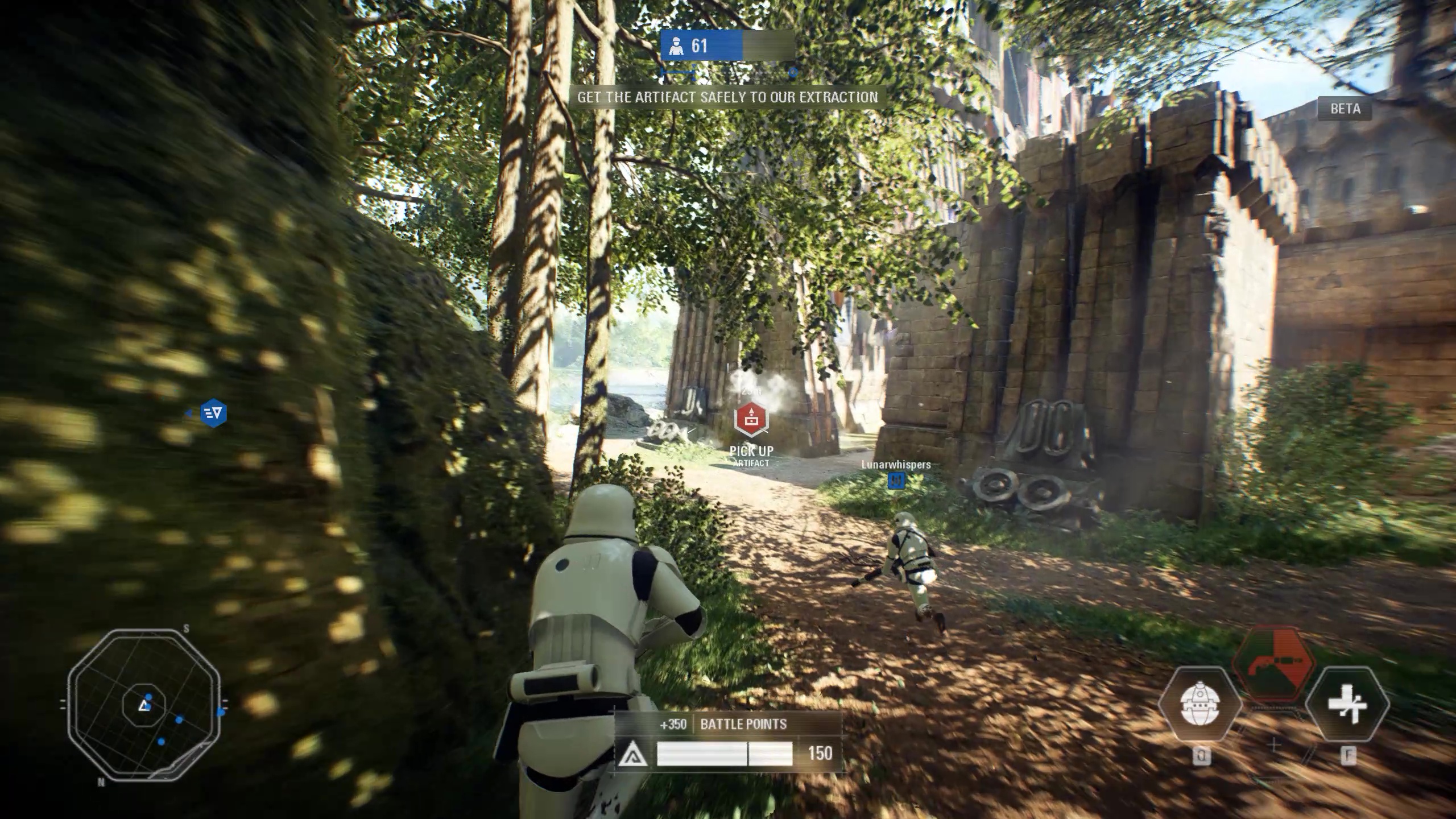
Thank the Force: fixed combat rolls
I was dismayed at how rolling in Battlefront devolved into a pseudo-trick for jerky forward boosts. Trying to get a bead on a squad of tumbling Imperials looked quite silly. SWBF2’s rolling is relievingly straightforward and direction-dependent, so while you can quickly chain rolls, you’ll be locked to whatever direction you’re pressing for the roll’s duration and there’ll be a slight pause between getting back onto your feet and being able to fire again. I’m glad rolling is more deliberate, and still useful for quick evades and dodging out of combat to recover. (If I needed to get somewhere fast, I pressed the sprint key. Astonishing.) Having the flexibility to roll forwards and backwards in addition to sideways was a great plus, and watching a battle droid somersaulting into cover while buzzing out “Yaaaay!” is something I don’t ever want to forget.
Good: Hero health
BF2's hero characters have smaller health pools, and that's a good thing. It emphasizes situational hero use rather than simply battering through scores of regular troops with barely a scratch. Such moments of glory still exist, but the intent is clearly that heroes should move together with their team as backup. Darth Maul and Rey hogged the spotlight as the new Force heroes, but I preferred the marksman efficiency of Boba Fett. Like his foil Han Solo, the jetpacking bounty hunter excelled at ruthlessly eliminating individual targets, and his tracking ability that pings nearby enemies for your team was a great advantage boost.
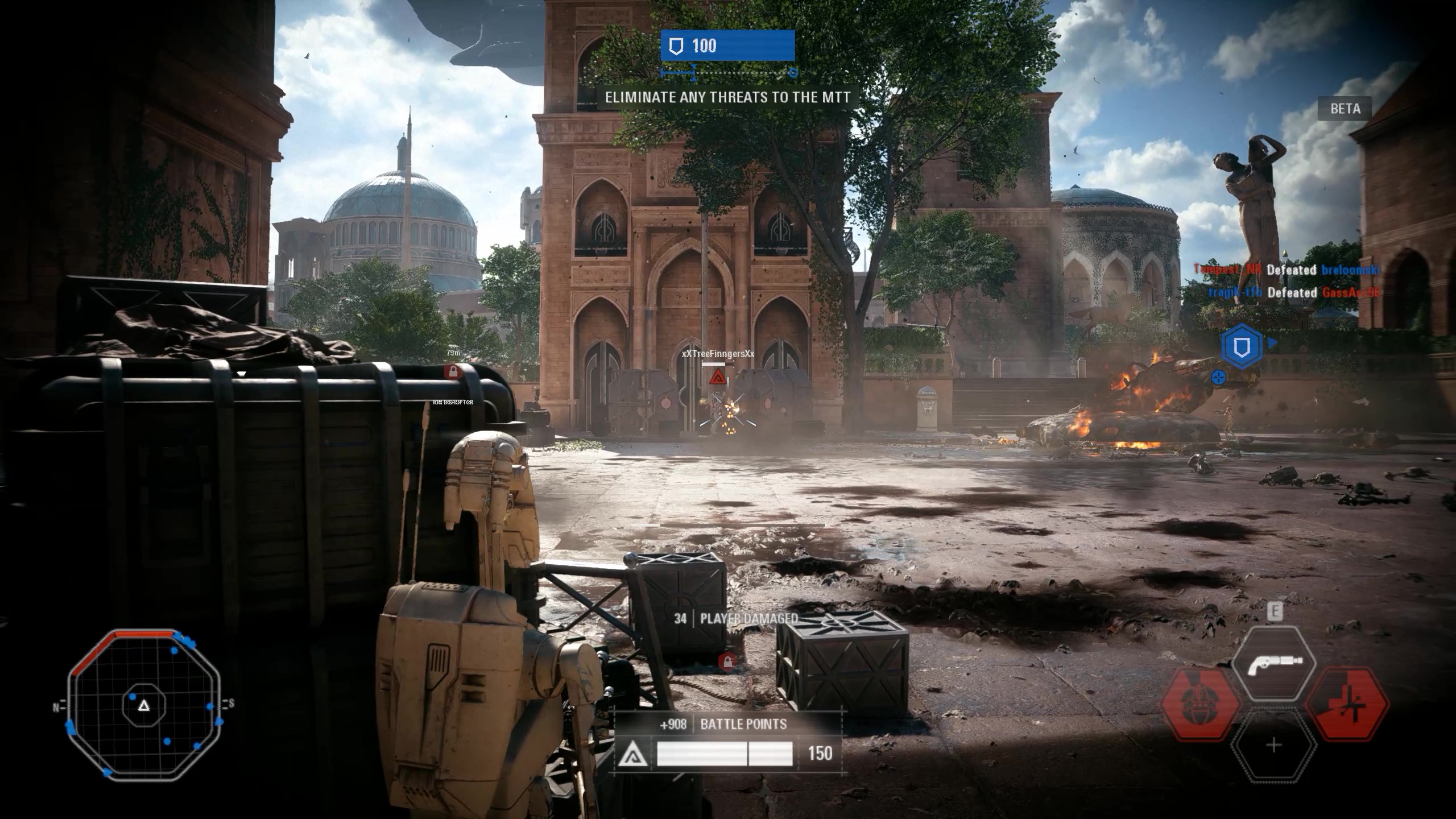
Exciting: Strike mode
I wasn't sure I was going to like Strike mode. It stripped out a chunk of Battlefront’s staples—heroes, vehicles, large warzones—and slimmed down gameplay to a 6v6 CTF-style format. After a few intense rounds, I was sold. Strike layers the importance of strategy and tactical positioning on top of keeping track of the artifact object the First Order team needed to carry to the extraction ship to win. The sample map, Takodana, was more functional than fancy. Its smaller boundaries spaced out a verdant forest edge with the imposing walls of Maz Kanata’s ancient castle, and its layout looked more organic than Theed’s ruler-straight design.
Playing as the Resistance, I took part in thrilling holdouts and desperate chases after the artifact carrier through the thick woods. Taking down a First Order trooper was a high impact action, as the enemy team would be temporarily down a man and thus weakened in potency to capture the artifact. As the First Order, I loved the preparatory moments when slipping through the brush to encroach upon the castle’s entrances, Specialist snipers posting behind tree trunks to cover the brawnier Assault and Heavy classes as they flanked around defenders. A slight annoyance I ran into a few times was when the First Order team was too good at securing the artifact, resulting in a round’s end in less than a minute. I’m hoping some sort of team scrambling system will help prevent this, but I’m still eager to check out Strike’s other planned scenarios at launch.
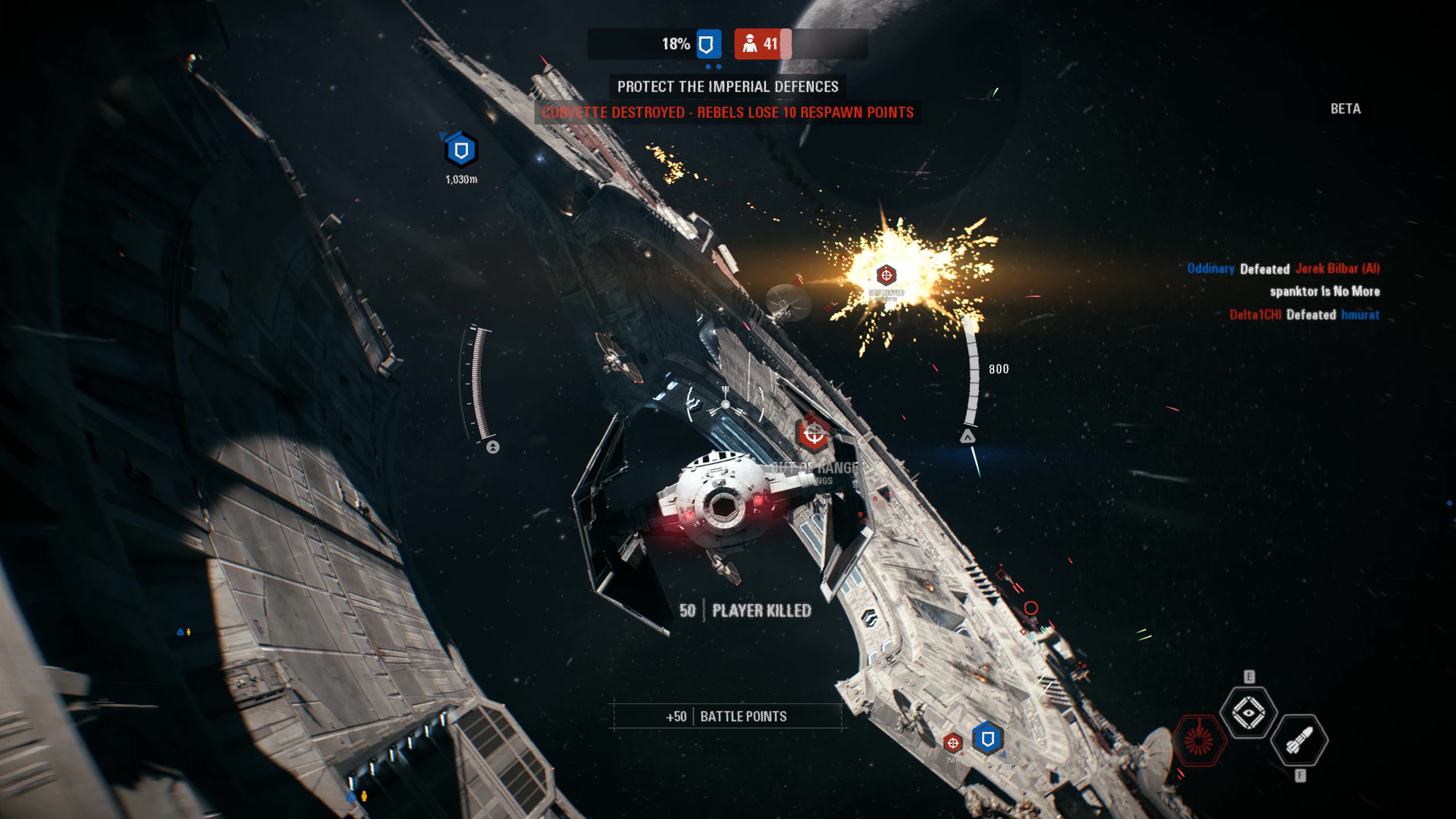
Busy: Starfighter Assault mode
Helmed by Need for Speed’s Criterion Games, Starfighter Assault mode may very well represent the triumphant return of skilfully deep space combat to Battlefront. It wouldn’t take much to improve upon the first game’s gussied up shooting galleries, but it felt as if Criterion put forth an overwhelming showing of ambition to prove its worth as co-developer. There was always something to do: bomb enemy cruisers, disable station shield generators, eliminate rival fighter craft harassing my team’s fleet, or hunt down hero ships such as the Millennium Falcon or Slave I. The opportunity to contribute something to my team was diverse, and the Fondor shipyards teem with brilliant vehicle detail.
Flight controls have been vastly improved. With a few menu toggles, I could switch between a simple control setup mimicking foot movement with automatic rolling and orientation correction. Turning these off enabled advanced flight and the ability to remap roll keys, providing the input dexterity for ace pilots (who, I’m proud to say, I survived a whole two seconds against before exploding spectacularly) to pull off some fantastic aerial dodges and razor turns. I wasn’t as keen with the light UI clutter when flying, and tracking a target through numerous reticles, brackets, and alert messages sometimes seemed more difficult than it should be.
Interesting: auto squads
Gone is the DICE mainstay of squad spawn. Instead, a ticking respawn timer automatically slots you into the next wave of five players, urging with on-screen messages to stick together and work as a team before plopping you into the map at preset entrance points. I can’t say I lament the loss of spawn-on-squad; though a good way to stick with friends, it worked against the concept of established frontlines with the ability to zap into existence nearly anywhere on the map. The spawns in the SWBF2 beta were a little too conservative—Theed kicked you nearly halfway down the street at times—but I believe this system does a better job at pointing players to the objective and conveying a 'reinforcement wave' theme to re-entering the field. I’m curious how this will play out on other map styles at release.
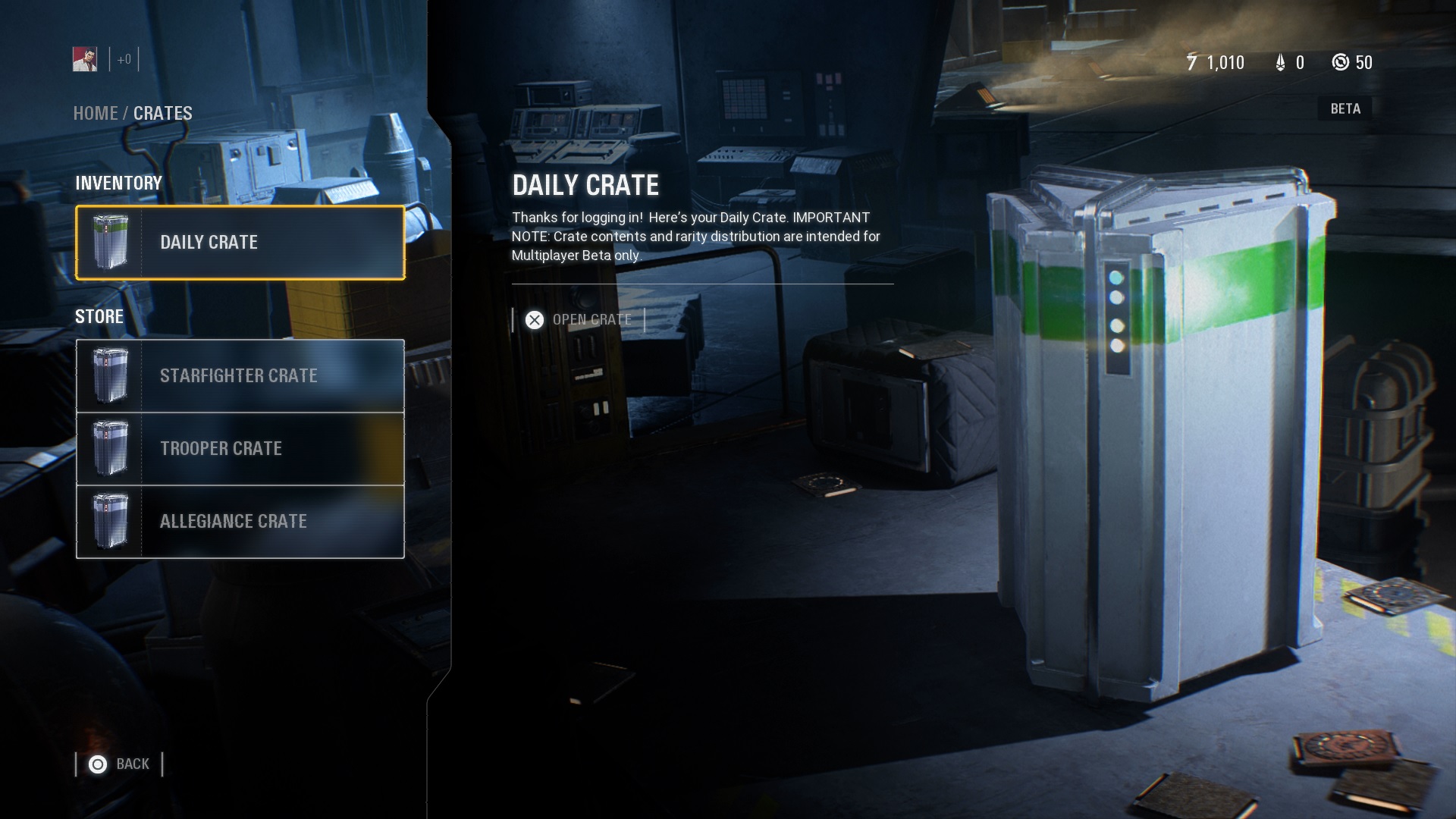
Cautious: Loot boxes
The growing scrutiny of loot boxes and microtransactions has turned to SWBF2. Ever since it was revealed Star Card and weapon unlocks would be tied to opening boxes with in-game credits or with real cash, there's been no shortage of community outcry over the assumed gating of progression behind the randomized nature of hoping for an upgrade from every box. The beta's version of the system didn't exactly assuage fears with its restrictive funneling of which class received upgrades purely on the whims of a dice roll. But in the field, I could barely tell the difference between a stock-equipped player and one bristling with attachments and full Star Card spreads. I was killed plenty of times by the latter, but not once did losing any of those fights suggest to me that I had simply been pay-to-win'd. I had the urge to reach for my wallet to fend off a difficult enemy team.
It's important to keep in mind the incomplete status of the game's loot crate system, signified by the beta's clear disclaimer that drop rates and pack contents weren't representative of the final version. DICE clearly plans a broader system where unlocks are also earned through playing classes normally, accomplishing specific challenges (a la Hutt Contracts from Battlefront 2015), and providing class-specific crates to enable players to more sharply focus on specific progression pathways. The beta wasn't providing the whole picture—and DICE's taciturn behavior over the weekend didn't help clarify things. Still, Star Cards, weapons, attachments, ship parts, and all the other pieces of the progression pie should come swiftly and easily in the full version, because the alternative—paid DLC framed by a base-splitting season pass—isn't SWBF2's destiny.
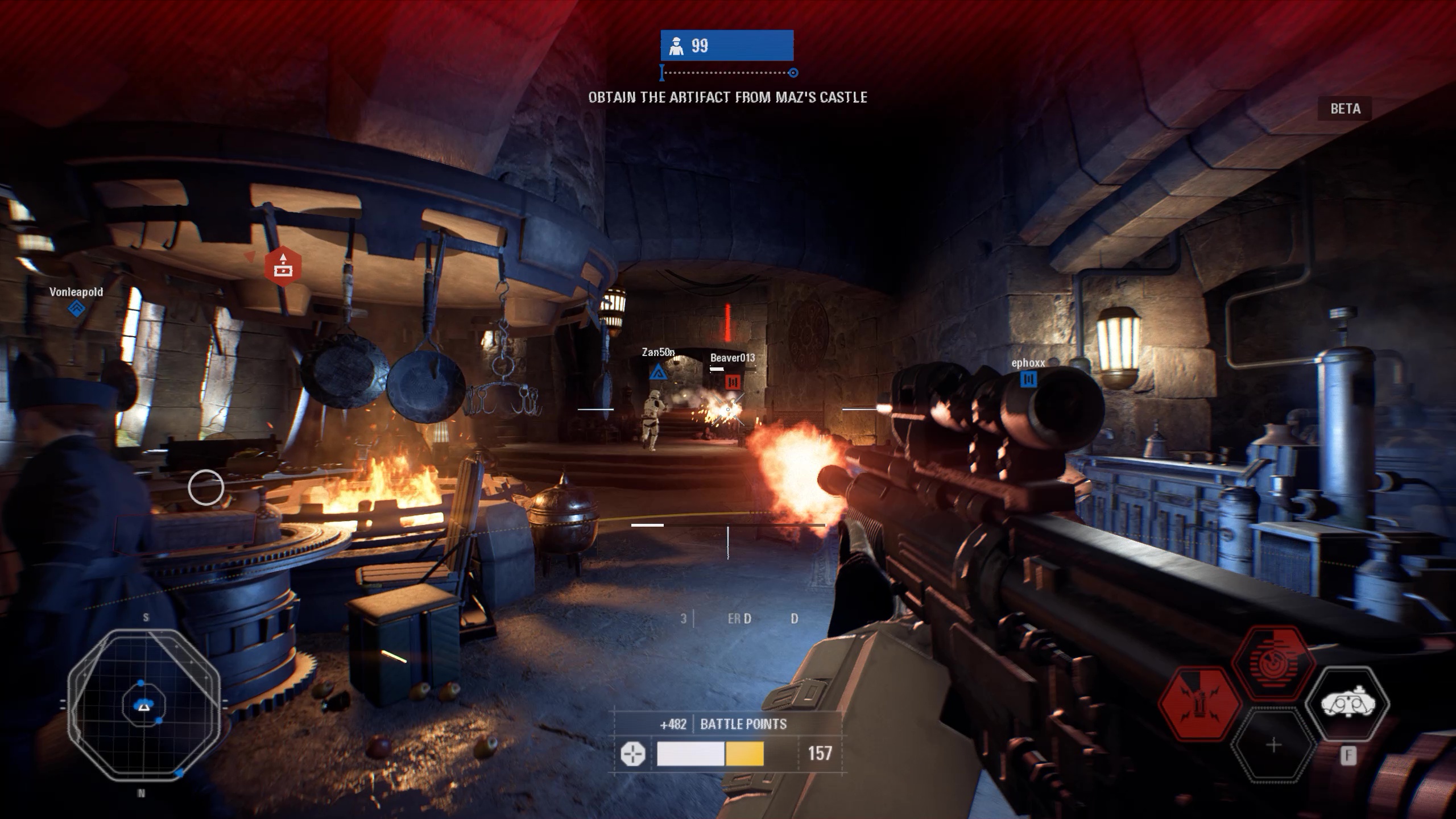
Bad: Specialist Infiltration
Beyond the It’s a Beta™ deflection, some class abilities teetered on the edge of absurdity. The Specialist’s Infiltration was the biggest culprit. It exchanged my sniper rifle for a medium-range burst carbine, jammed the minimap, revealed all nearby enemies, increased my run speed, and removed the heat mechanic from my gun. Worse, Infiltration’s duration would refresh every time I nabbed a kill, so I could work through handfuls of enemies in seconds from a simple flank around a building or treeline. As I understand it, the refresh was a perk added to the beta and won’t be included in the base version of the ability at launch, though it will be available as a Star Card modification. I’m hoping for a smoothing of Infiltration’s raw power, as its vast versatility and damage output felt way too lopsided for a single ability.
Omri Petitte is a former PC Gamer associate editor and long-time freelance writer covering news and reviews. If you spot his name, it probably means you're reading about some kind of first-person shooter. Why yes, he would like to talk to you about Battlefield. Do you have a few days?


